Jaguars and lions are both deadly felines. The jaguar stalks the forests of South America while lions hunt in prides on the savannah in sub-Saharan Africa. With such fierce creatures separated by an entire ocean, we can’t help but wonder what would happen in a jaguar vs lion fight. Although this meeting would never happen in the wild, we can still explore the available data to determine which animal would win a battle.
We have gathered several important points of data to compare between the jaguar and the lion, and that will be enough to tell us which creature would survive in a one-on-one battle!
Comparing a Jaguar and a Lion
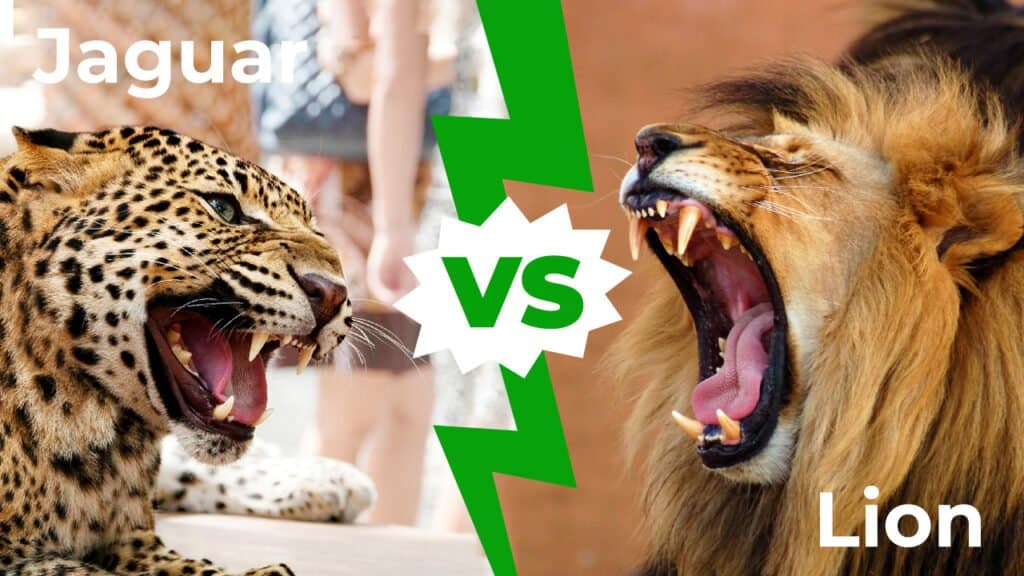
| Jaguar | Lion | |
| Size | Weight: 120 – 300lbs Length: 3.5ft- 5.5ft Height: 2ft-2.5ft at the shoulder | Weight: 264lbs – 550lbs Length: 4.7 ft – 8.2ft Height: 36in-48in |
| Speed and Movement Type | 50 mph | -35 mph (closing speed of 50mph) -Sprints to enemies |
| Bite Power and Teeth | 1,500 PSI bite power -30 teeth – 2-inch fangs | – 650-1000 PSI bite power -30 teeth including up to four – 4-inch canines |
| Senses | – Strong sense of smell – Powerful vision at nighttime, several times better than humans’ vision – Great sense of hearing | -Amazing sense of sight, especially night vision. -Good sense of smell capable of smelling other lions’ markings -Great hearing allows them to hear prey miles away. |
| Defenses | – Superior speed to everything in its range – Can comfortably rest in trees to make up for lack of pack mentality – Able to climb trees to avoid predators – Capable swimmer | – Stays with pride for safety in numbers – Large size – Can quickly run away from enemies |
| Offensive Capabilities | – Strong, sharp, short claws – Powerful bite and long teeth | – Sharp claws can gash foes – Paw strikes can deliver a powerful, staggering blow – Strong biting power can splinter bones and tear prey open. |
| Predatory Behavior | – Ambush predator that can set up attacks from trees | – Primarily stalks and pounces on the opponent – Can act as an endurance predator – Uses groups to take down prey |
The Key Factors in a Fight Between a Jaguars and a Lion
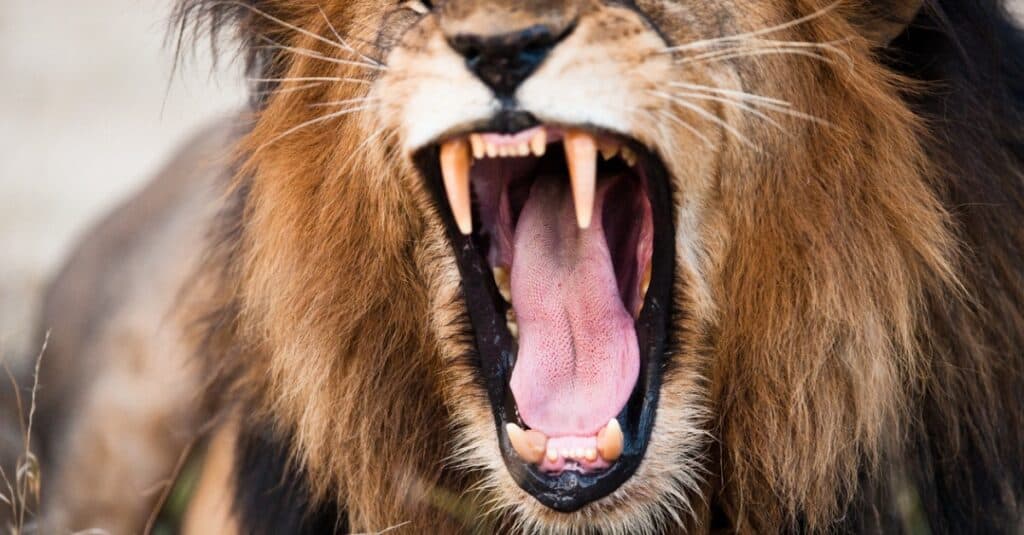
A fight between lions and jaguars would come down to which has superior physicality and fighting abilities
©iStock.com/3dan3
We cannot just look at any one single feature and determine a winner for this fight. Instead, we have identified and examined seven different elements of this fight that help us predict a winner. Broadly speaking, we can break down these elements into physical features and combat skills. Consider the smaller facets of both while we tell you which creature has an advantage in every situation.
Physical Features of Jaguars and Lions

Jaguars can weigh up to 300lbs and lions can weigh up to 550lbs!
©GoWildPhotography/Shutterstock.com
A large portion of the fight between jaguars and lions would be decided by the physical elements of each. Everything from the mammals’ size, speed, and senses would play a role in determining which of them has enough of an edge to be the winner of the fight. Consider the bodies and abilities of jaguars and lions.
Jaguar vs Lion: Size
Jaguars have a lot of variances in their size and weight. They can weigh anywhere from 120lbs up to 300lbs, so they can be fairly heavy while standing 2.5ft tall and growing over 5ft in length. The largest jaguar ever recorded tipped the scaled at 328 pounds.
Lions are much larger, with the smaller ones weighing 250lbs, standing up to 4ft high, and growing to 8 ft long. The largest lion ever recorded in the wild weighed 690 pounds.
The lions have a serious size advantage.
Jaguar vs Lion: Speed and Movement
A jaguar has a tremendous galloping run style that allows it to achieve upwards of 50mph. It is far faster than the lion that can only reach 35mph but it can reach 50mph for very short periods while chasing enemies. In other words, the jaguar gets to decide if they have had enough and want to flee.
The jaguar has the speed and movement advantage.
Jaguar vs Lion: Bite Power and Teeth
The jaguar has a very strong bite that can reach 1,500PSI in power. Their jaws aren’t the only deadly thing, though. They have 30 teeth and 2-inch fangs to bite with, and they can each do a lot of damage.
Lions’ bites have been measured at 650PSI, but some people believe they can reach up to 1,000PSI. Their teeth are longer than jaguars, up to 4 inches. Lions also have 30 teeth.
Jaguars have a lot more power than lions even though they lack the tooth length and ability to open their mouths as wide.
Jaguars have the biting advantage.
Jaguar vs Lion: Senses
Both the jaguar and the lion are predatory animals that have keen senses they use to hunt. Jaguars have a powerful sense of smell that helps them find prey as well as great night vision and hearing. Lions have a sense of sight that is best described as incredible, and their sense of smell is good enough to pick up on the markings of other animals. Their hearing allows them to hear prey from miles away.
Lions win the contest of senses.
Jaguar vs Lion: Physical Defenses
The jaguar has many defenses that include the ability to climb into tree branches and rest, their immense speed, and a high level of swimming skill. Lions stay with their pride, and that is protection enough. However, their large size and speed help too.
Jaguars are more cunning with their defenses, but lions have an individualized sense of security. The lions get the advantage for the one-on-one fight.
Combat Skills of Jaguars and Lions
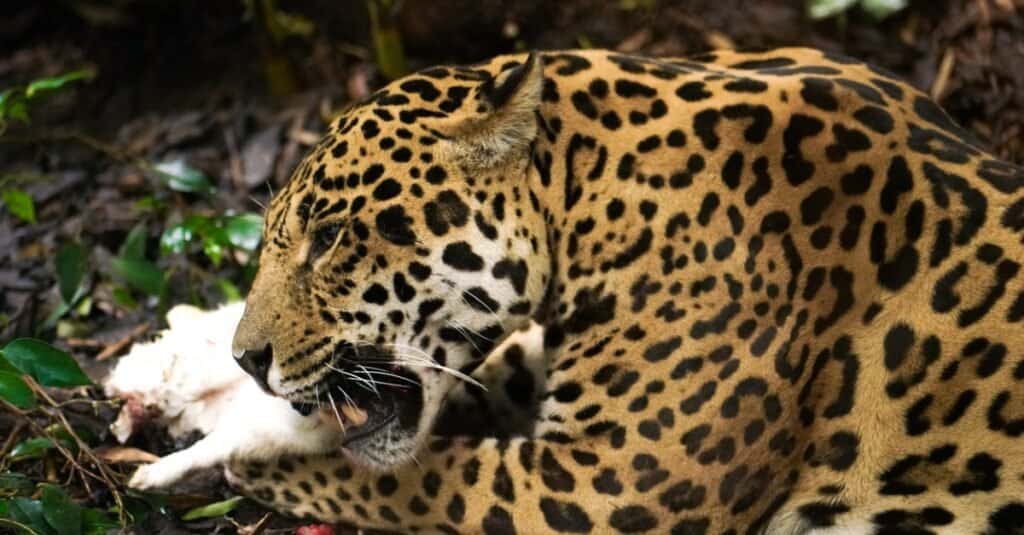
Jaguars and lions can both act as ambush predators, and they’re very good at it.
©iStock.com/Steven Anderton
The physical features of these beasts are impressive, but it’s important to see how they put them to use with their fighting skills. Consider how each animal attacks and preys on other animals and see which is deadlier in a fight.
Jaguar vs Lion: Offensive Capabilities
Both jaguars and lions prefer to deliver debilitating or fatal bites to their enemies. Both creatures also have sharp claws that can hold their prey in place and allow them to deal a fatal blow. The lion can bite hard, but the jaguar can bite harder. The lion has bigger teeth, a wider mouth, longer claws, and more power, though.
With all this in mind, the lion is the winner in offensive capabilities.
Jaguar vs Lion: Predatory Behaviors
Lions vary between ambush predators and endurance predators. They are highly successful at both, especially when they bring their pride along for dinner. Jaguars are solo ambush predators that hide in the dense underbrush of rainforests or set up ambushes in trees.
The advantage for predatory behaviors of individual animals is a tie.
What Are Key Differences Between a Jaguars and a Lion?
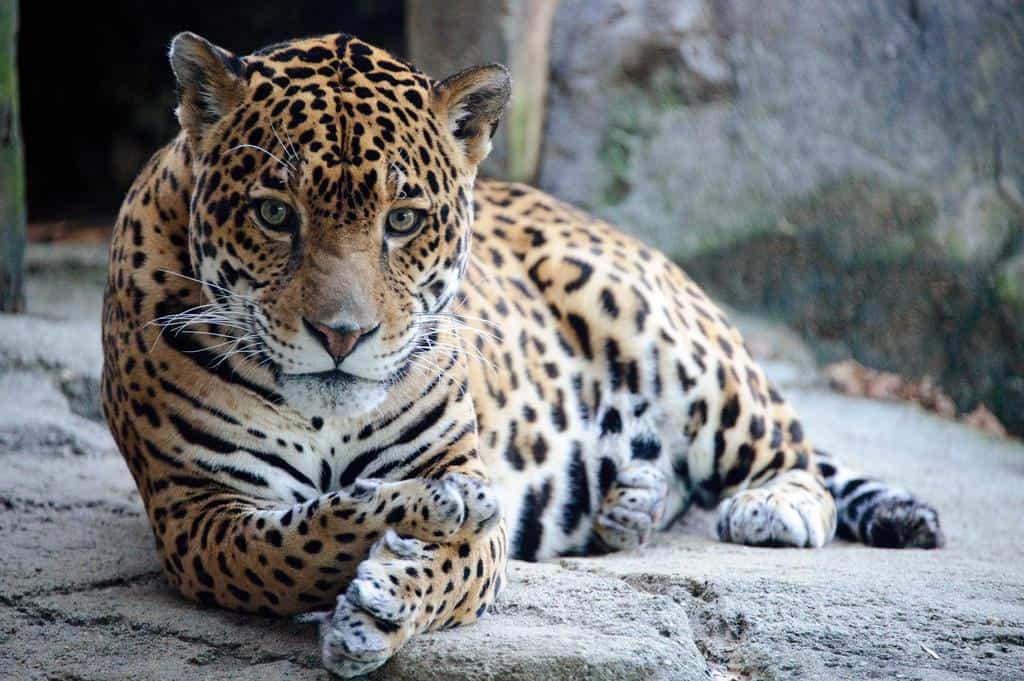
Lions live in a social setting while jaguars live alone.
©Eric Kilby / CC BY-SA 2.0, Flickr – License
Although jaguars and lions are both felines, lions are larger, stronger, and more sociable animals compared to jaguars. A lion can weigh up to 500lbs and grow up to 8ft long, but jaguars only weigh a maximum of 300lbs and grow a little over 5ft long.
Lions live in prides while jaguars live a solitary life for the most part. Lions are large, tan animals with short fur and manes in males and some females. Jaguars are primarily tan with black and tan spots, but some jaguars are black and are called black panthers.
Who Would Win in a Fight Between a Jaguars and a Lion?

A lion would win a fight against a jaguar.
©iStock.com/MaggyMeyer
A lion would win a fight against a jaguar. Granted, a smart jaguar could potentially ambush a lion, but unless they landed a fatal bite right away, they’re not going to be successful. Jaguars might be able to open their mouths wide enough to bite into a lion’s head or neck for an immediate kill, the kind they’re used to having.
A jaguar could bite and clamp down on a lion, but the lion would probably be able to shake them off and deal even more damage, leveraging its weight and sheer strength to turn the tables.
The lion’s senses are not so poor that they wouldn’t know that the jaguar is lurking nearby. So, the fight would become a battle of brawn, and the lion has all of it. With its huge size and power, the lion would overwhelm and beat the jaguar. That doesn’t mean the jaguar can’t get away if it decides to retreat early in the fight. The jaguar is much faster than the lion, but it will still lose the fight.
What Animal Can Take Down a Lion?
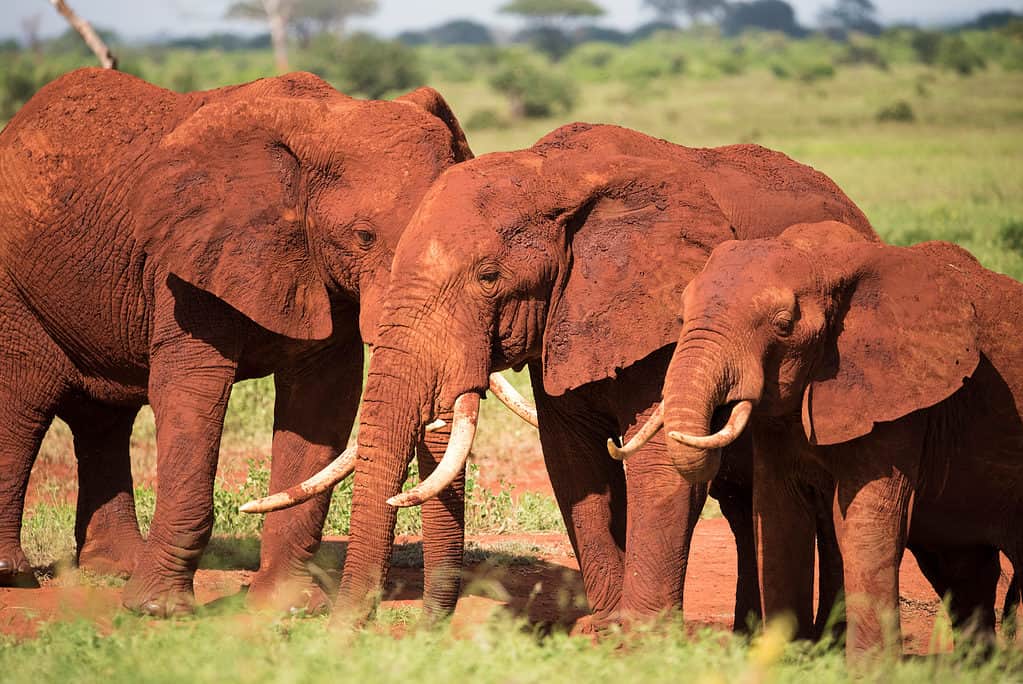
African elephants are capable of lifting about 770 lbs with their trunks
©Prasanth Aravindakshan/Shutterstock.com
Well, it might be the king of the jungle, capable of making its distant speckled relative think twice about taking it on. But in nature, there’s always someone else bigger, stronger, and frankly speaking, more dangerous.
Enter the elephant, the largest land mammal on the planet, with an innate apathy for the tawny feline, which the lion itself is well aware of.
There’s the elephant’s weight, which at 15,400 lbs simply relegates the lion at its heaviest — 550 lbs — to the lightweight category.
There’s also that trunk consisting of 150,000 muscles and capable of hefting weights of almost 800 lbs. Add to that a pair of tusks capable of weighing 100 lbs and reaching 9 feet in length and the reason for the lion’s respect for the mighty pachyderm becomes all too clear.
In a fight, against a giant male in its prime, a lion would stand no chance. One toss of those tusks would send it airborne, possibly injuring it in the process, before those feet trample it consigning it to oblivion.
The photo featured at the top of this post is © Adalbert Dragon/Shutterstock.com
Thank you for reading! Have some feedback for us? Contact the AZ Animals editorial team.






